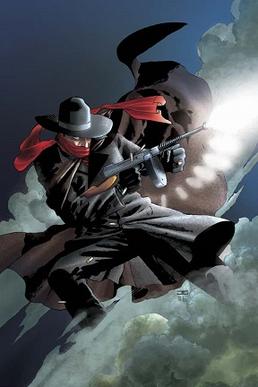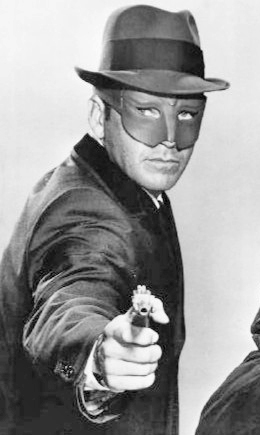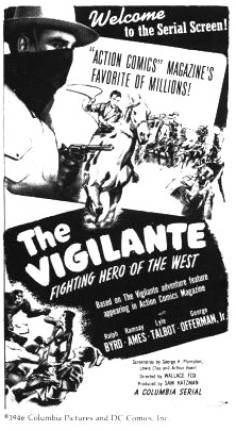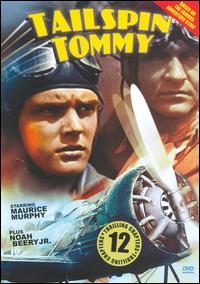Phantom, phantoms, or the phantom may refer to:

Dick Tracy is an American comic strip featuring Dick Tracy, a tough and intelligent police detective created by Chester Gould. It made its debut on Sunday, October 4, 1931, in the Detroit Mirror, and was distributed by the Chicago Tribune New York News Syndicate. Gould wrote and drew the strip until 1977, and various artists and writers have continued it.

The Shadow is a fictional character created by American magazine publishers Street & Smith and writer Walter B. Gibson. Originally created to be a mysterious radio show narrator, and developed into a distinct literary character in 1931 by Gibson, The Shadow has been adapted into other forms of media, including American comic books, comic strips, serials, video games, and at least five feature films. The radio drama included episodes voiced by Orson Welles.
Terry and the Pirates is the title of:

The Green Hornet is a superhero created in 1936 by George W. Trendle and Fran Striker, with input from radio director James Jewell.
The underworld is a place in religion and mythology to where the souls of the recently departed go.
Flashpoint or flash point may refer to:

The Vigilante, marketed as The Vigilante: Fighting Hero of the West, is a 1947 American Western film serial directed by Wallace Fox. The 33rd serial released by Columbia Pictures, it was based on the comic book cowboy Vigilante, who first appeared in Action Comics, published by DC Comics. It stars Ralph Byrd, well known for his central role in the Dick Tracy serials. It was his last serial appearance.
Junior G-Men was an American boys club and popular culture phenomenon during the late 1930s and early 1940s that began with a radio program and culminated with films featuring the Dead End Kids.

Radio Patrol is a police comic strip carried in newspapers from August 7, 1933, to December 16, 1950, in the dailies, with a Sunday strip that ran from November 25, 1934, to October 20, 1946. It was created by artist Charles Schmidt and writer Eddie Sullivan, who both worked for the Boston American. Sullivan was a newspaper reporter who specialized in crime reporting.

Dick Tracy vs. Crime, Inc. (1941) is a Republic Movie serial based on the Dick Tracy comic strip. It was directed by the team of William Witney and John English with Ralph Byrd reprising his role from the earlier serials. It was the last of the four Dick Tracy serials produced by Republic, although Ralph Byrd went on to portray the character again in two features and on television.

Tailspin Tommy is a 12-episode 1934 Universal film serial based on the Tailspin Tommy comic strip by Hal Forrest. Directed by Lew Landers and produced by Milton Gatzert, the serial was the 97th serial of the 137 released by that studio. The plot of Tailspin Tommy concerns a conflict over a government airmail contract.

Radio Patrol is a 1937 Universal movie serial based on the comic strip Radio Patrol.
Killer Kane is a fictional character in the Buck Rogers comic strip and its subsequent 1939 Buck Rogers serial film produced by Universal Studios. The character also appeared in the 1979 film and subsequent TV series, in which he was a defector from Earth to the Draconian Empire and sought to assist its malevolent leader Emperor Draco and his daughter Princess Ardala in their plans to conquer Earth.
Father and Son or Fathers and Sons may refer to:
Dick Tracy is a comic strip.
Blondie is a term sometimes used to refer to a person with blonde hair.
Crime Patrol may refer to:
This page is based on this
Wikipedia article Text is available under the
CC BY-SA 4.0 license; additional terms may apply.
Images, videos and audio are available under their respective licenses.






